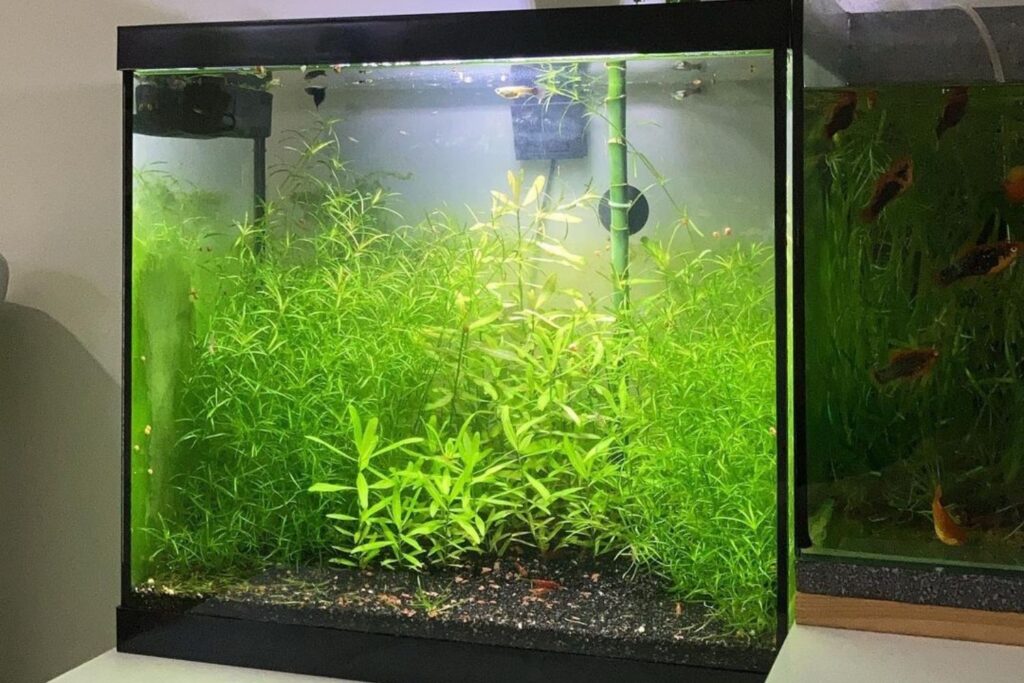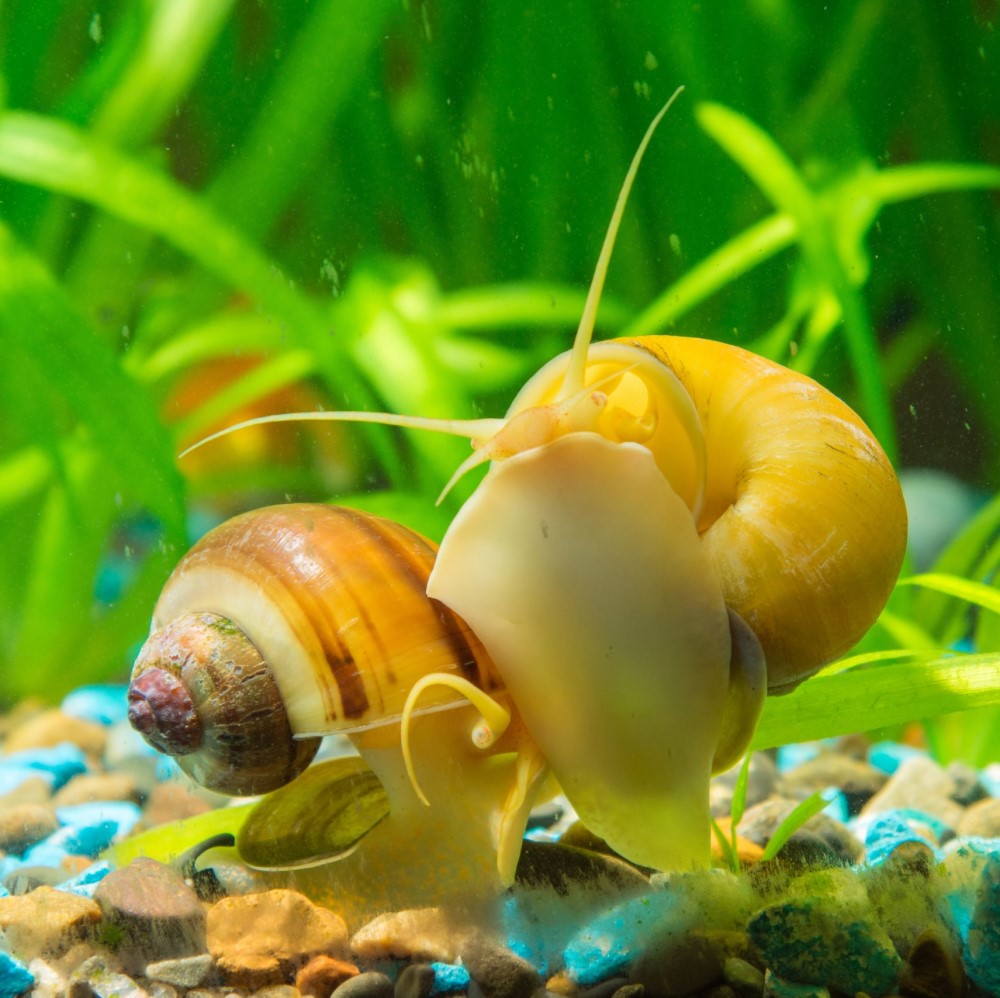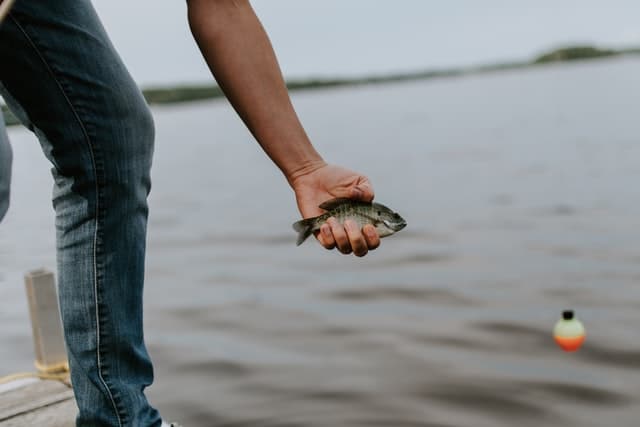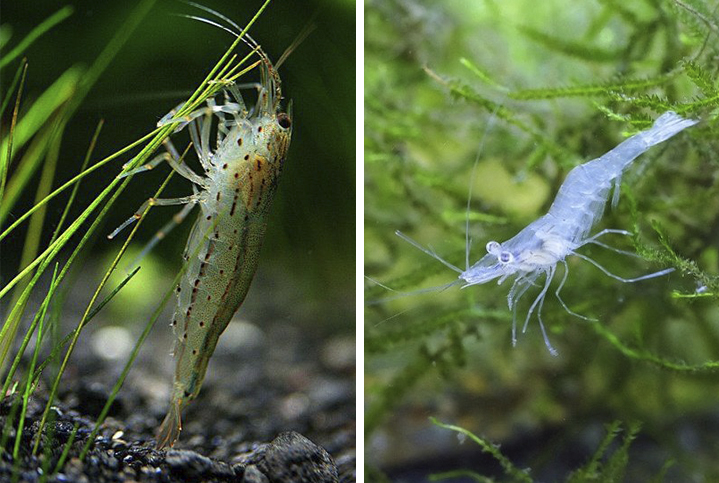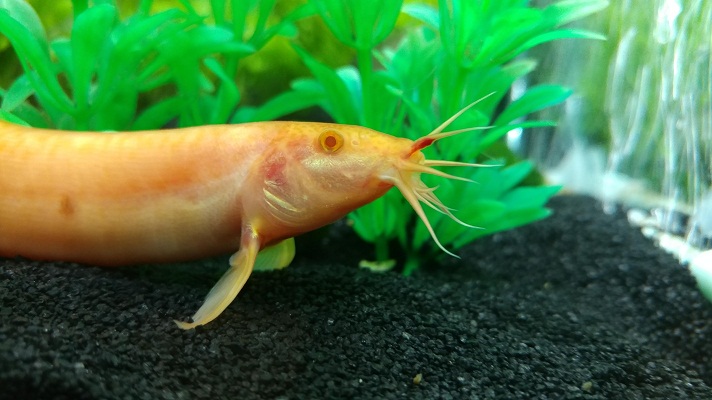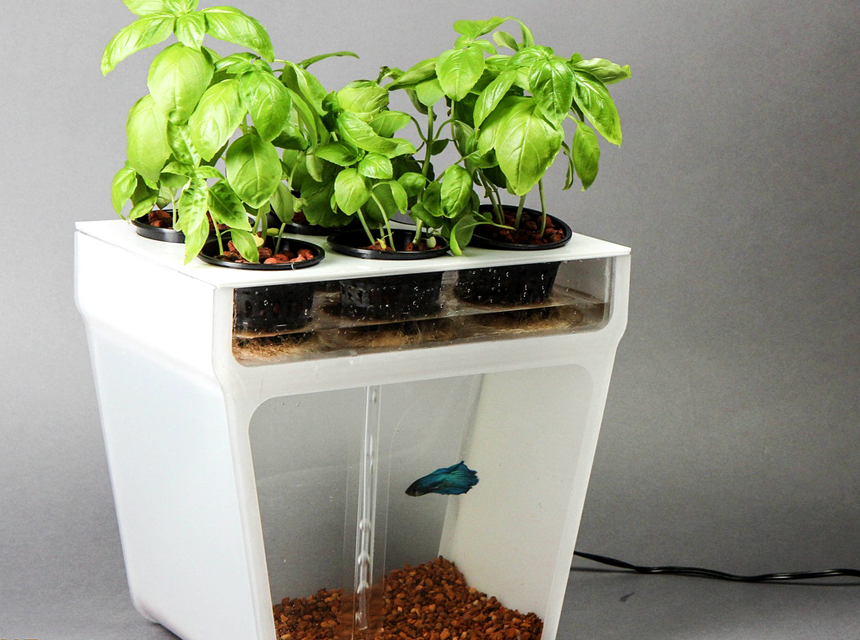

Goldfish are supposed to be gold in color. But what happens when they turn a different color? If you’ve looked at your aquarium lately and wondered, why is my goldfish turning black, we’ve got the answers for you. Like most animals, goldfish rely on their physical appearance to tell you when something is wrong. As a responsibly fish owner, it is then your job to interpret these signs, diagnose the problem, and then remedy it. Let’s look at all the reasons your goldfish may have black spots and what you can do to get your beloved pet back to its optimal health. Afterall, you want your tank to radiate life and not darkness.
Your goldfish won’t simply change from gold to black overnight. Instead, if there are any issues it will slowly grow black spots on its body. While you might not notice the change right away, if the issues persists, eventually there will be enough black spots to sound the alarm.
Even though goldfish are supposed to be gold, their exact coloring will differ, fish to fish. This is because genetics plays a huge part in just what shade of color your goldfish is. Sometimes, goldfish inherit genetic differences, including a black tinge or spots.
Usually, you will see this color difference right away when you purchase your goldfish. Other times, a goldfish will darken slightly as it becomes older.
Always go through and check your water levels and observe if there are any behavioral issues with your goldfish. If your fish seems happy and healthy, then you may be able to just chalk it up to genetics. Everyone is a little different, so why can’t your goldfish be different, too?
Black spot disease is a pretty rare issues with goldfish but it is something to be aware of. In fact, you need a very specific set of circumstances for your goldfish to develop the disease.
Aquariums are always more interesting when you have different species interact with each other and snails are a common addition. However, they can spread black spot disease.
The disease is actually a parasite and works by the host laying eggs. Once the eggs hatch and turn to larvae, they will infect the skin of a fish.
Fish will do what they must to protect themselves, and this includes crafting hard cysts around the larvae infestation. The cysts are black in color, hence the name of the issue.
To help your fish, remove any snails and do a deep-clean of your fish tank. If caught in time, there is still a chance that your fish will become healthy again but be sure to monitor it for any other behavioral changes.
You want to take good care of your goldfish and that requires regular feeding. But just as humans often forget to limit their calorie intake, so too do goldfish. If there is food available, goldfish will eat it, whether they need it or not.
Extra food means extra waste and that can quickly offset the delicate balance in an aquarium. Not only can there be more ammonia in the tank (which we’ll talk about next) but the filter itself can become more clogged.
If the tank doesn’t have the right metrics, your goldfish will develop black spots as its body tries to adapt and find a way to stay healthy. If your tank doesn’t return to its optimal balance, then your goldfish can become too sick to save.
When you have a goldfish, be sure to find out exactly how much it needs. This is usually based on weight or size. Then, keep a log of feeding, especially if you have extra help caring for your fish. Kids love to be helpful and they may not realize that you have already fed the goldfish, or even just how much is needed. With careful instruction, you can ensure your kids know how much to feed their fish and when to do so.
Another problem with overfeeding your fish is the buildup of ammonia in the tank. Ammonia occurs when there is too much waste in the tank, either from fish excrement or even uneaten food. As the fish flakes stay on the bottom of the tank, they start to rot, which releases ammonia.
Unfortunately, ammonia poisoning is very common in fish tanks, especially with goldfish. This species tends to be pretty messy and you want to watch the tank for any extra waste issues.
If you see black spots on your goldfish and realize there is a lot of unwanted food on the bottom, there’s good chance ammonia is to blame.
To make sure, you can always use a product like Tetra EasyStrips Complete Aquarium Test Kit. Simply dip a strip into the water and it will change colors to indicate the ammonia levels. If too high, change your feeding routine and make sure you give the tank a thorough cleaning.
You may think your goldfish is a simple creature but it has needs just like any other animal Trusted Source The effects of interacting with fish in aquariums on human health and well-being: A systematic review Most research into the health benefits of human-animal interaction has focused on species that interact physically with humans, such as dogs. www.ncbi.nlm.nih.gov . You should try to replicate a goldfish’s natural habitat as closely as you can in its new home. To start with, learn a bit of background information about your new pet.
Goldfish originally come from China Trusted Source CARE OF GOLDFISH Though now found in almost every country in the world, in captivity and out, the goldfish, Carassius auratus, originated in eastern China as a red mutation of a normally greenish-silvery fish closely related to and generally resembling the carp. spo.nmfs.noaa.gov and thanks to their colorful hue, were bred as pets. Now they are common in Japan, the United States, and many other countries around the world.
As for their water requirements, they prefer warmer water that is between 50 and 76 degrees Fahrenheit. You will definitely need a heater in your tank to keep your goldfish happy.
While you can simply place artificial plants inside your aquarium, if you are able to, fresh plants make for a better environment. In the wild, goldfish will nibble on pond plants and even eat insects.
As for space, be sure to give your goldfish at least 10 gallons of water. If you have multiple goldfish in your tank, make sure there are 10 gallons of water for every fish. If you have larger goldfish, you will need to provide even more space.
All these requirements are essential to understand as your goldfish can quickly become stressed in the absence of them. Without adequate warmth, stimulation, and space, your goldfish will become depressed and agitate. They will manifest this unhappiness in a change of appearance, which can include black spots.
What is your fish tank setup like? Do you have a colorful backdrop on the far side of your aquarium or is it a sheet of black paper? How about the accessories inside the tank? Are they colorful reefs or dark, sunken ships?
Goldfish have a lot of natural predators and even in a safe environment like an aquarium, they will do their best to blend in with their surroundings. This includes becoming a darker color to match the dark décor.
If this is the case for your goldfish’s color change, you have two options going forward. First, you can simply accept the color change. It doesn’t mean that your fish is ill or that it is lacking any nutrients. And, if you really like your tank setup, then there is no reason to change it. You will have to live with a darker-colored goldfish, but there is no harm in this.
Second, if you miss the brightness of your goldfish, then you will have to change the tank’s setup. Grab a more tropical-inspired background paper for the wall. Look at getting brightly-colored grasses for your tank and add in a fun accessory or two.
You may also want to increase the light in and around your tank so that is a brighter atmosphere. There are some pretty fun tank setups, such as the Aqueon NeoGlow LED Aquarium Kit. In it, you get colorful gravel, two bright artificial plants, and even some fish food.
While the appearance of black spots or a black tinge to your normally bright goldfish is alarming, the good news is that it is usually not permanent. When your fish turns color, it is trying to tell you something, so you need to listen to it and make any necessary adjustments.
The first step is to test your water as this will give you a quick answer to if there is too much ammonia. If there is, clean the tank well and then setup a proper feeding schedule so that there isn’t too much waste in the area, nor is there too much rotted food on the bottom.
As for signs of distress, check your tank to see if there is enough space for you fish and if the water is warm enough.
Another option is to change the layout of your tank to provide a new environment or even to add more colorful accessories. Have fun with your tank setup and don’t forget that fish like light during the daytime, even if you aren’t home. A too dark setup is not natural and your fish will quickly blend into the darker shade.
Although it isn’t as common, your goldfish may be suffering from black spot disease. While this doesn’t have to be permanent, you do want to catch it as soon as possible. This parasite is usually introduced to the tank though the inclusion of snails, so remove them immediately and change the tank’s water.
Black spots on your goldfish should not be permanent, as long as the issue is fixed quickly. Pay attention to your fish and look for color changes or different behaviors. Then, you can fix what is wrong right away so that your goldfish is as bright as ever.
Of course, if your goldfish is just genetically predisposed to have black spots, then there is nothing you can do to change it.
While it would be nice if your goldfish could talk, instead you will have to look for non-verbal clues to see if it is healthy or not. This includes the appearance of black spots. Goldfish are naturally gold in color, and if you see black spots on your fish, it usually means there is something wrong. Check the ammonia levels in your tank to see if you are overfeeding your fish. Your goldfish may also chance colors if your tank is setup in a darker area. Stress can also manifest in a color change and if you have snails in your tank, your goldish may be suffering from black spot disease. We hope you can now answer the question, why is my goldfish turning black. With a little bit of extra work, you can get your goldfish back to a healthy and happy environment.
